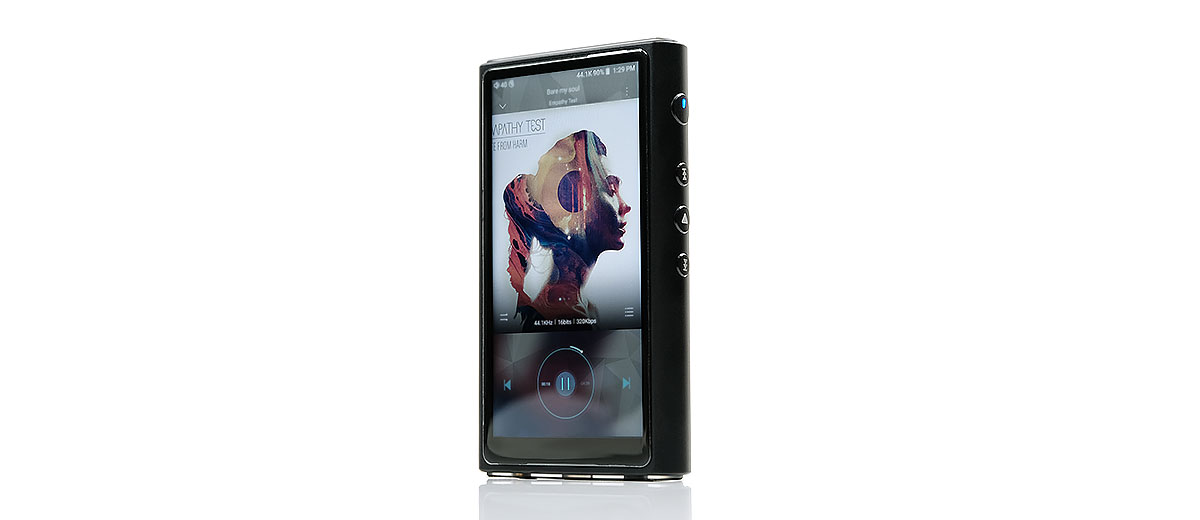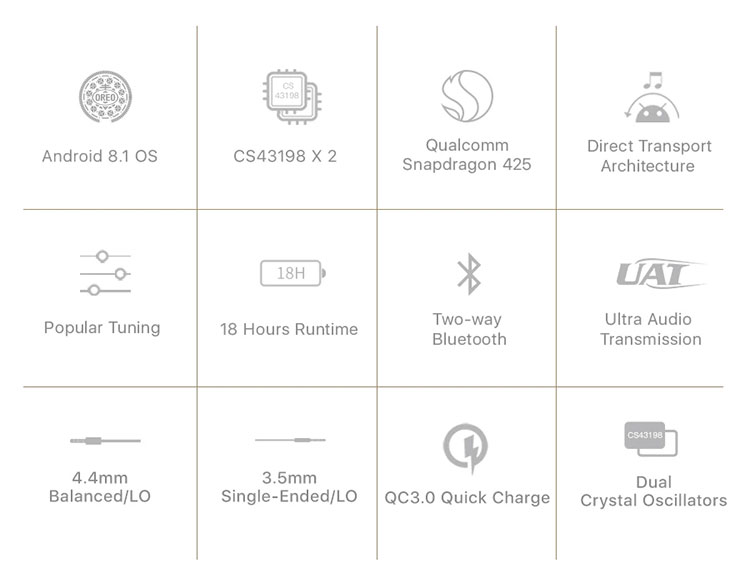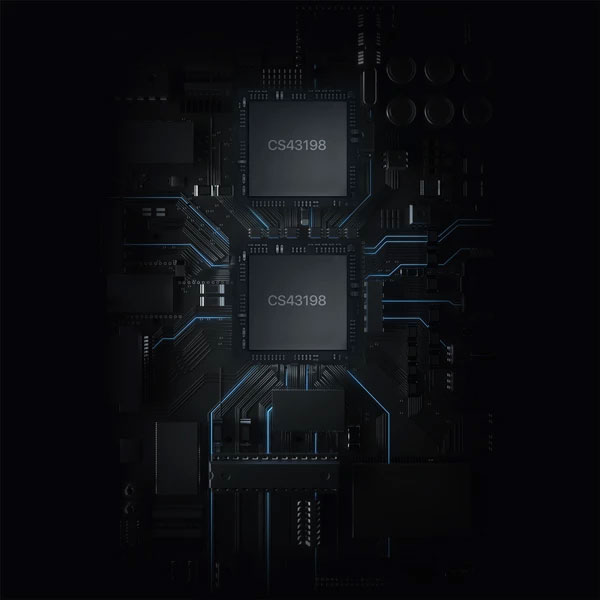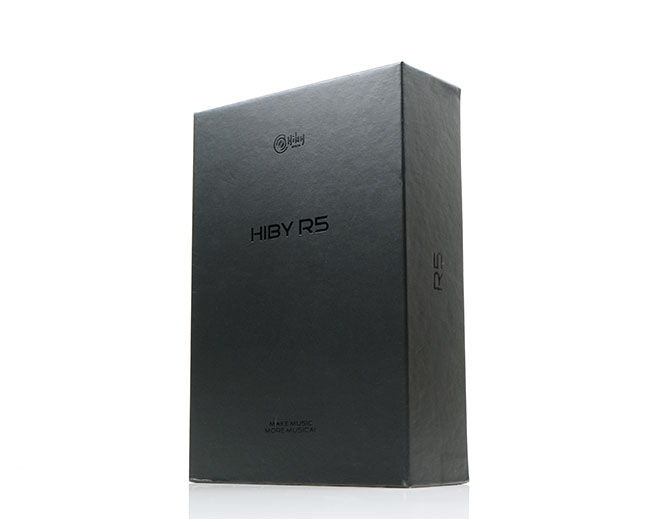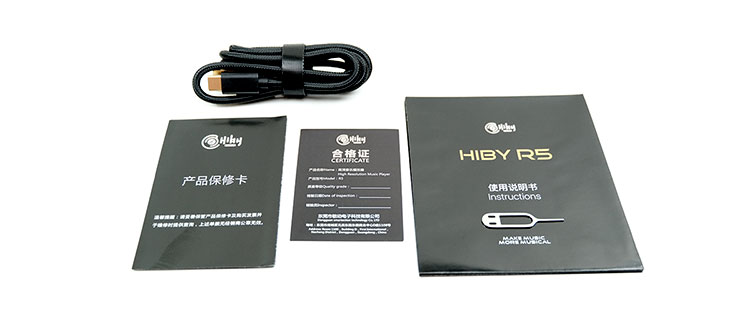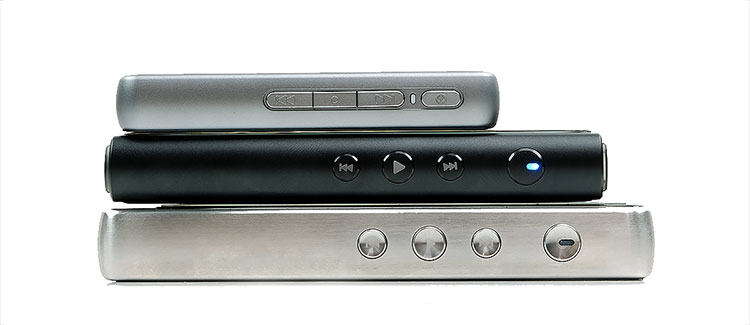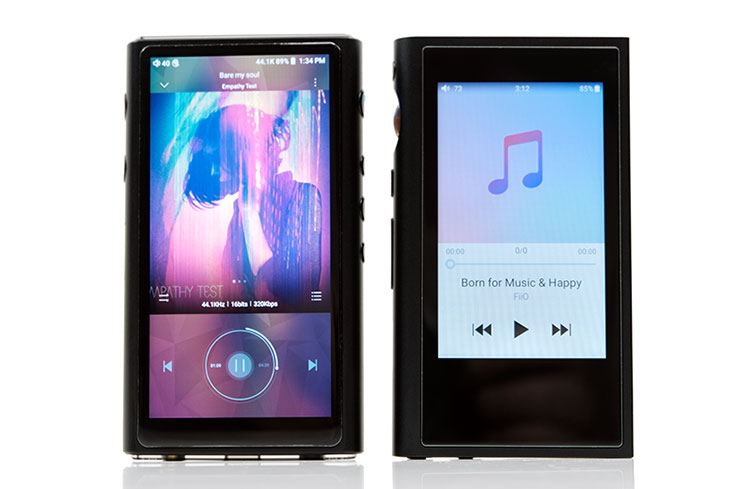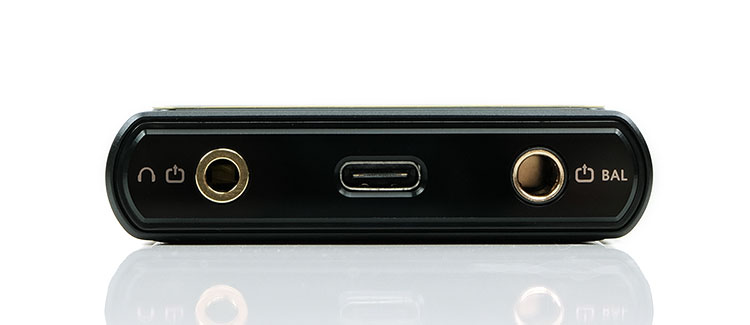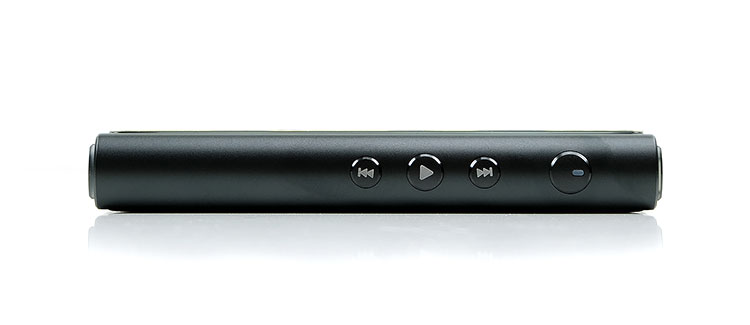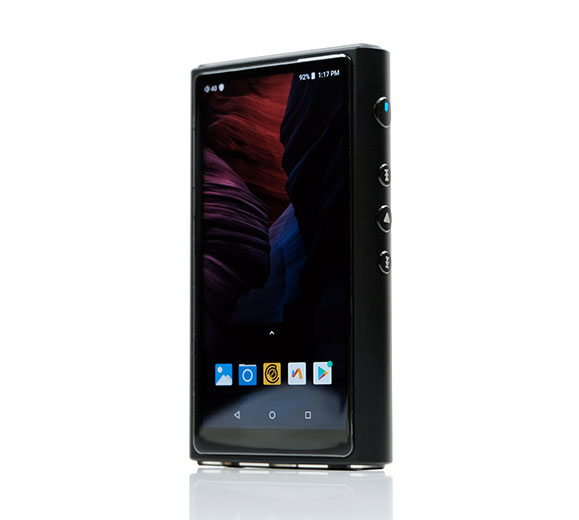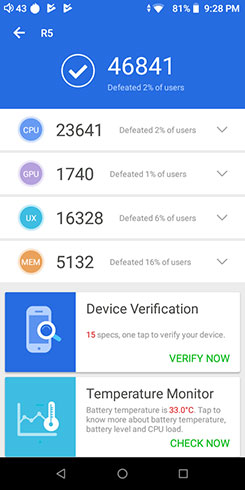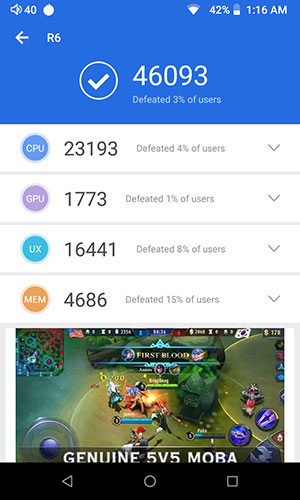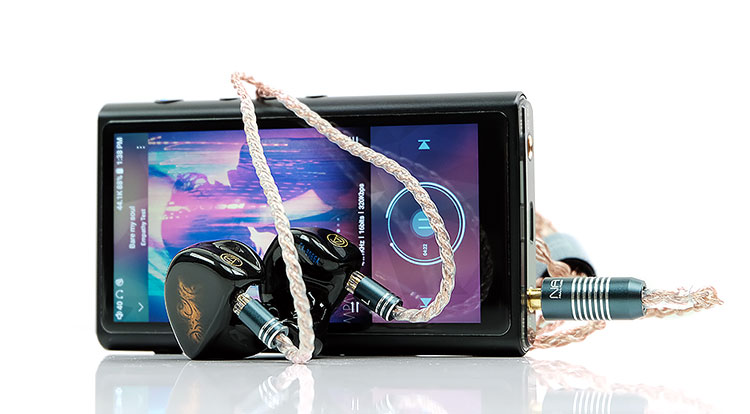The HiBy R5 is the company’s new mid-range digital audio player featuring a dual CS43198 DAC implementation, Android Oreo, and a Qualcomm Snapdragon 425 processor. It is priced at a competitive $399.
Disclaimer: The HiBy R5 was sent to us a sample in exchange for our honest opinion. We thank HiBy Music for this opportunity.
To learn more about HiBy reviews on Headfonics you can click here.
And here it is, the latest DAP from HiBy, the R5. The numbering is a fairly logical giveaway here with the new R5 sitting neatly in-between the R3 and the R6 & R6 Pro with pricing to match at $399. That’s a bit cheaper than the FiiO M11 and $100 higher than the M9. From our pics below, however, I would say the FiiO M9 users should definitely take a second look at the R5 before they trade up.
For those that are new to HiBy DAPs, your truly first met the team and heard the then-unknown, R6 at the Guangzhou AV Show back in 2017 and could not wait to break this to the readers when I got back. Since then the R6 Pro and R3 have come out with responsive OS, TIDAL access, beautiful touchscreens and of course, integrated Google Play. For freshmen, HiBy started like a Pro in many respects.
The only hiccups with the flagship DAPs were in the amping with that high output impedance, (R6) and high noise floor with the R6 Pro. The R3 had its own OS challenges but amping wise it was beautifully quiet with sensitive IEMs.
Tech Inside
The R5, well out of the box that is, seems to have nailed both the noise floor and what OS to use right away. Believe me, with the CA Solaris, the R5 is super quiet and a totally open Android Oreo out of the box at $399 is a killer move.
That’s the beauty already from my testing with the R5. Quite a lot of R6 features have been carried over that I believe makes this a compelling DAP at $399.
Processor

DTA
The R5 also does DTA or Direct Transport Architecture, much like the R6. That’s bit-perfect playback right across the software platform irrespective of the audio apps you use. We are seeing that feature appear everywhere these days in Cayin and iBasso but good to see it make its way into their mid-fi offerings.
OS
Of course, the platform is Android Oreo (8.1) so that means two-way Bluetooth, HiByLink with decoding up to LDAC as well as their own hi-res UAT or Ultra Audio Transmission codec for W5 users out there, (and N6ii customers if that link-up floats your boat).
Amping
This is very surprising for me. Normally I would expect moderate numbers for a DAP at this price point and size but HiBy seems to think differently. The R5 is capable of an excellent 1040mW+1040mW@16Ω and 564mW+564mW on a 32Ω load as well as a 3.5mm line-out. That is up there with some of the higher-end players in terms of total output power with that kind of weighting.
I am not sure yet on the exact amplification stage and opamp flavoring inside the R5. I do hope to find out for the main review. I also have no clue on the impedance, (edit maybe <1Ω), or differing output numbers for balanced or unbalanced right now. However, I can tell you its a very quiet DAP in both balanced and unbalanced with the Solaris which is my most sensitive monitor.
DAC
This is the big change from the R3 and R6 which use ES9028Q2M DAC implementations. The R5 uses a dual CS43198 chipset design which seems to be the flavor of the month because I believe iBasso and AK are using the same chips in the soon to be announced DX160 and the existing A&K SR15. I will be interested to see how they differ when that DX160 drops into the office.
There are no detailed specs out just yet on the R5 DAC performance but as far as I know, the CS43198 is capable of DSD over PCM (DSD DoP) up to DSD256 and PCM 32/384kHz. The chip makers also advertise a THD+N of around 115dB so it will be interesting to see if the R5 formal specs match that.
At the moment there is no MQA support on the R5 and I am not sure if, or when, that will be implemented but for now it is app-level decoding only.
Unboxing
It is a fairly ‘plain Jane’ experience here but if you have seen the other R-series DAP boxes they are not actually that different in design. It is black, it is a box and that’s really about it save for the logo, strapline, and R5 branding.
Thankfully, the insides are nicely cushioned for transportation with a two-layer cushion and foam lid with the accessories neatly organized in their respective compartmental boxes under the main DAP layer.
Accessories
Inside the accessories are a bit sparse but on par with the competition. You get a silicone protective case, microSD tray pin, manual and certificate cards, and that lovely nylon jacketed and HiBy branded USB-C to USB-A data and charging cable.
You also get a couple of screen protectors though I do not think they are tempered glass. Given the curved 2.5D glass being used tempered is an issue for most DAP companies. One of the screen protectors is pre-applied to the R5 screen out of the box so you just have to peel the top layer off and you are good to go. The back also has a protective thin film which can be simply peeled off.
Design
The R5 design is relatively compact measuring in at 107.7 x 61.2 x 15.6mm. In fact, we found the dimensions quite similar to the FiiO M9 though the design is a little more refined on initial impression. The corning is a touch smoother and symmetrical on both sides with a glossy glass panel to the rear and a matte black anodized finish on tan aluminum chassis. It feels solid and weighs in at around 160g or around 30g more than the M9.
The R5 will come in 3 different colors with this black one, plus also gray and champagne or gold edition. I much prefer the black simply because of the way HiBy do their LCD screens with an almost borderless design. This 4″ IPS 540*1080 screen is not quite as expansive by the looks of it but it does dominate the front panel and is much more impressive than the M9 screen (see pic below).
Black minimizes the effect of bezels much better than gray or gold IMHO. The 2.5D glass is still in effect and it does go right to the edges of the front panel. However, the 4″ screen is a tiny bit smaller so not quite as “wow” as the R6 Pro screen dimensions.
Features
You won’t find anything on the top panel of the R5. All inputs and outputs are either on the sides for the physical controls or on the bottom for digital and analog.
The bottom panel houses both analog outputs and digital IO in the form of a USB-C slot in the middle. Digital audio (OTG) works out of the box also on the R5 with a successful connection to a Hugo 2. OTG flash memory loading also works with a 64GB SanDisk drive loading just fine.
Both the 3.5mm TRS and 4.4mm TRRS jacks have shared line-outs so I will check in the main review if the balanced is a true LO or not but my guess is unlikely. Rather the 3.5mm LO is likely to be a true line-out if the R5 has one.
The right panel is pretty similar to the R6 layout with the power/LCD screen button complete with LED light for battery and charging status and playback controls just underneath. They have a decent rise above the housing so its not hard to find them unsighted.
On the left panel, you have the two usual HiBy volume control buttons with 100 digital steps at 0.5dB per step to play with. The memory card slot is housed on the left panel just below the volume buttons.
The slot is a pin tray with a supplied pin pusher key much like the R6 memory card slot. It is officially listed at being capable up to 512GB but I suspect it should be able to handle the latest 1TB cards. I only use 64GB cards for security and cost reasons and they work just fine so far.
OS Performance
We will talk about the ins and outs of the OS performance and functionality in the main review but for now, we can tell you that it is a complete open Android Oreo 8.1 platform with Google Play Store integration out of the box (international edition).
I had no issues loading TIDAL, Spotify, and Audiomack and I would advise grabbing Chrome as the Via browser that comes with the R5 pre-installed is a touch tricky to use due to the heavy integration of Chinese into the OS.
I did have a few initial bumps in the road with the HiBy Music player which was unusual with a few crashes and a slow media scan. I hope that’s just a firmware thing and can be improved as the performance on the R3 and R6 versions were very good. Once scanned and sorted I have not had an issue with HiBy Music and yes, MSEB is there and works just as you would expect so thumbs up for me on that.
AnTuTu Numbers
The Snapdragon 425 is just as effective on the R5 as it is on the R6 by the looks of it. Again, we will talk about this in the main review but the numbers above suggest the performance is excellent out of the box already. Granted, not an M11 level of performance and there is 2GB less than the R6 Pro for multitasking but given the price point, 2GB is reasonably fair.
Initial Sound Impressions
It is quite early to form a definitive impression of the R5 sound signature because much of this will be quite contextual in terms of comparison to other DAPs and monitors/headphones used.
What I can say right away though is that the noise floor is superbly low, much lower than the R6 Pro with near silence on the Campfire Audio Solaris in both unbalanced and balanced low gain output. It really does make the R6 Pro sound rather noisy. I cannot foresee you needing any iFi IEMatch cables for this one if you are using efficient monitors.
In so far as being compared to the R6 Pro it is more neutral on initial impression with not quite as much low-end weight and a little bit more treble presence. It has less of that natural roll-off that the R6 Pro was tuned in mind with.
Bass weight is not as fulsome, more linear and neutral sounding but still pretty punchy using the CA Solaris and Hum Delores as the two initial tested IEMs. I actually ended up using the DUNU DK-4001 for the majority of the subsequent initial testing as that warmer full-bodied sound of the DK-4001 gelled quite well with the R5. It remains to be seen if that will be my top choice thus far for pairings and synergy.
I do prefer the tuning compared to the FiiO M9, however. Timbre seems smoother, not as hard-edged with a bit more body. Vocals also seem to display a little less sibilance on the R5. It makes the M9 seem a little hollow-sounding on guitar and percussion work.
Stay Tuned!
So far, the R5 seems to have a lot to offer for the price. I am impressed with the speed, the app compatibility and definitely the low noise floor is a big bonus for sensitive IEMs. The tuning does seem to be more neutral compared to the R6 Pro and also a little smoother and less edgy compared to the FiiO M9.
No question the build quality is very good and I do love its ‘pacute’ sizing. Makes it very easy to work within one hand. However, much to be done here for sure in terms of the main review and my initial sound impressions could change the more I mix and match.
Do not ask me yet how it compares to X, Y, Z as what you get above is all I have for now. The main review will give you most everything you need to know so stay tuned for that!
HiBy R5 Specifications
| Operating System | Android 8.1 |
| SoC | Snapdragon 425 |
| No. of CPU Cores | 4 |
| CPU Max Frequency | 1.4GHz |
| DAC | CS43198 x 2 |
| Input Method | Touchscreen |
| WIFI | 5GHz/2.4GHz supports IEEE 802.11 a/b/g/n protocols |
| Bluetooth | Bluetooth 4.2 |
| USB | TypeC (USB2.0 data rate) |
| Display Size | 4.0 inches |
| Colors | 16 million colors |
| Topology | IPS |
| Resolution | 540*1080 |
| PPI | 300 |
| Touchscreen | Multitouch |
| RAM | 2GB |
| Internal Storage | 16GB |
| External Storage | Up to 512GB + via 1 micro SD card |
| Buttons | 6 physical buttons |
| Buttons Definitions | Power/Previous/Pause/Next/Volume Up/Volume Down |
| Headphone Out | 3.5mm |
| Balanced Headphone Out | 4.4mm |
| Line Out | 3.5mm LO |
| Balanced Out | 4.4mm LO |
| Digital Out | SPDIF (USB out) |
| USB | USB storage, USB DAC IN/OUT |
| Colors | Black/Gray/Gold |
| Dimensions | 107.7*61.2*15.6mm |
| Headphone Impedance Range | 16~300Ω |
| EQ Adjustments | 10 bands (±12dB) |
| Channel Balance | L 10dB to R 10dB |
| Gain Level | Low / High |
| USB DAC | PCM/DoP/Native |
| Power Supply | 9V/1.5A |
| Battery | 3500mAh |
| Charge Time | 2H |
| Charge Protocol | QC3.0 |
| Firmware Update | Over-the-air update |
| Text Size | Adjustable |
| 3rd Party Apps | Unrestricted access via Google Play and apk download |




